Can speculative science fiction ground us in reality?
In an age where technology and urbanization shape the contours of our reality, the role of theory as a form of critique becomes ever more crucial. The consequences of centuries of colonization, globalization, and exploitation are evident in our sprawling cities and degraded environments. The 2017 sci-fi film “Blade Runner 2049”, directed by Denis Villeneuve, provides a fertile ground for exploring how theory can intervene in and transform our understanding of the urban future. By examining the film’s portrayal of urban isolation, bombardment of stimuli, informatics of domination, and cybernetic alien futures, we can theorize design as a form of spatial science fiction, using this framework to imagine and construct alternative urban worlds.
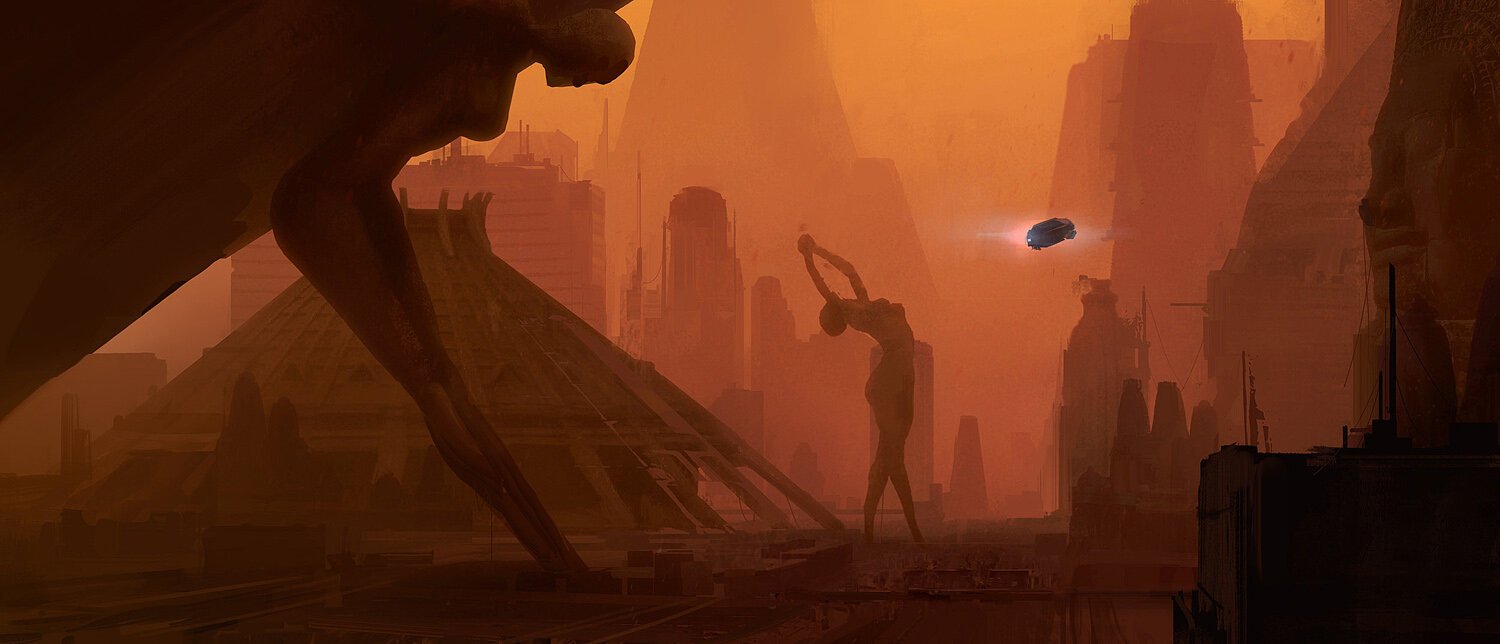
Extermininsm as a condition of Hierarchy and Scarcity
In Peter Frase’s “Four Futures: Life After Capitalism,” the chapter on “Exterminism” describes a dystopian future where extreme inequality and resource scarcity lead to a hierarchical society that uses violence and repression to maintain order. “Blade Runner 2049,” directed by Denis Villeneuve, vividly illustrates a world where these themes of hierarchy and scarcity are central, aligning closely with the concept of exterminism.
In “Blade Runner 2049,” the world is starkly divided between those who hold power and those who do not. The film depicts a future Los Angeles characterized by towering skyscrapers and sprawling urban decay, highlighting the extreme disparities in wealth and living conditions. The powerful, represented by figures like ‘Wallace’, who have access to advanced technologies and live in opulent surroundings, while the majority of the population struggles to survive in a harsh, polluted environment.

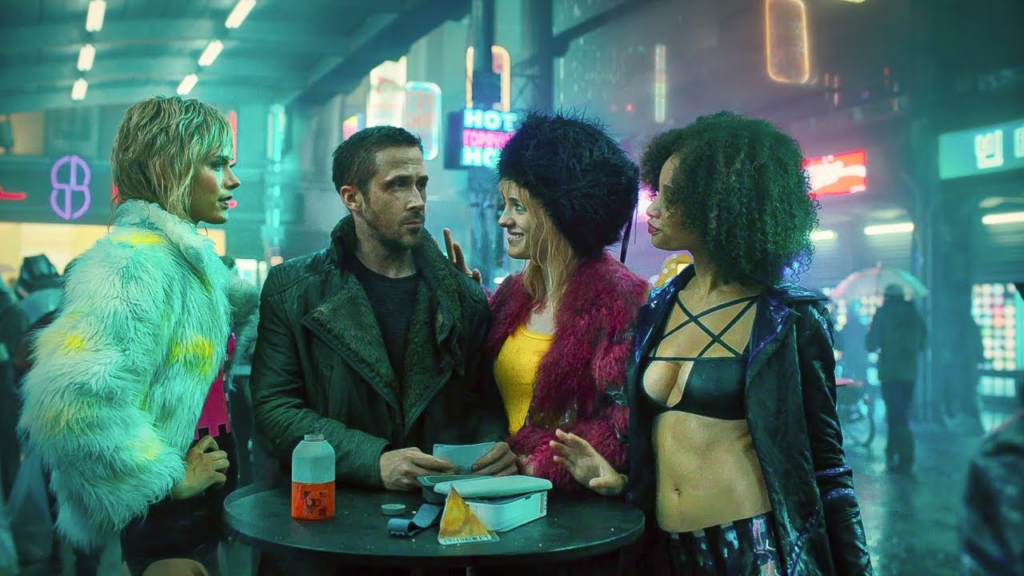
The Replicants, bioengineered beings created to serve humans, embody the ultimate underclass. Despite their advanced capabilities, they are subjected to strict control and brutal enforcement. Officer K, a Replicant himself, works for the LAPD to “retire” (kill) obsolete models, illustrating the violent measures used to maintain the social order. This reflects the exterminism narrative, where those in power use force to manage and eliminate perceived threats to their dominance.
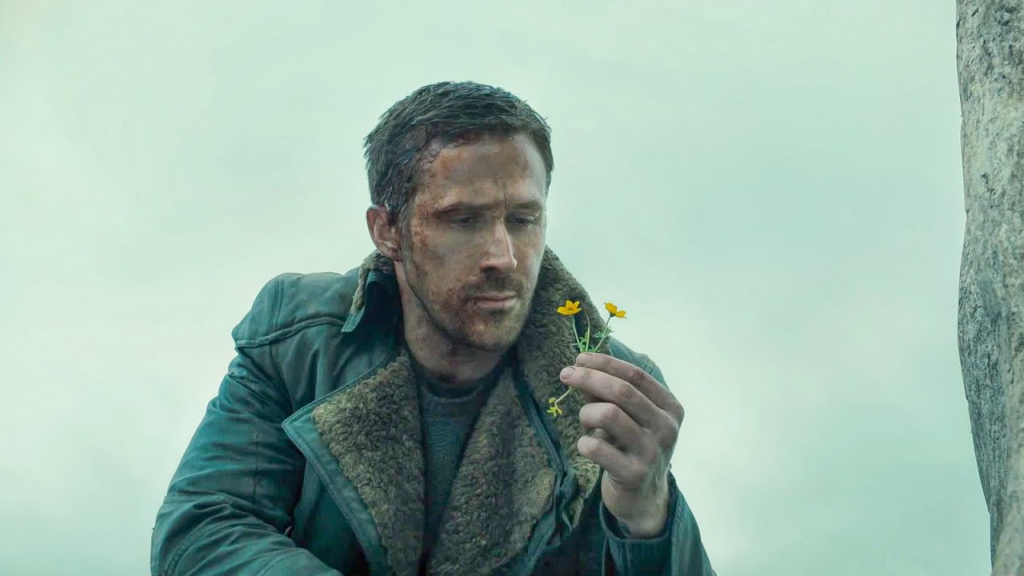
The Skyscraper as an Artifact of Urbanization
In “Blade Runner 2049,” skyscrapers are more than just buildings; they are artifacts of urbanization that embody the intersection of technology, authority, and societal control. The LAPD Tower, is reminiscent of the ‘Mil-Spec Fortress’ a central element in the film, symbolizes the pervasive reach of corporate and governmental power. Its imposing structure and advanced surveillance systems reflect a dystopian reality where urban spaces are controlled and manipulated to maintain a specific social order.
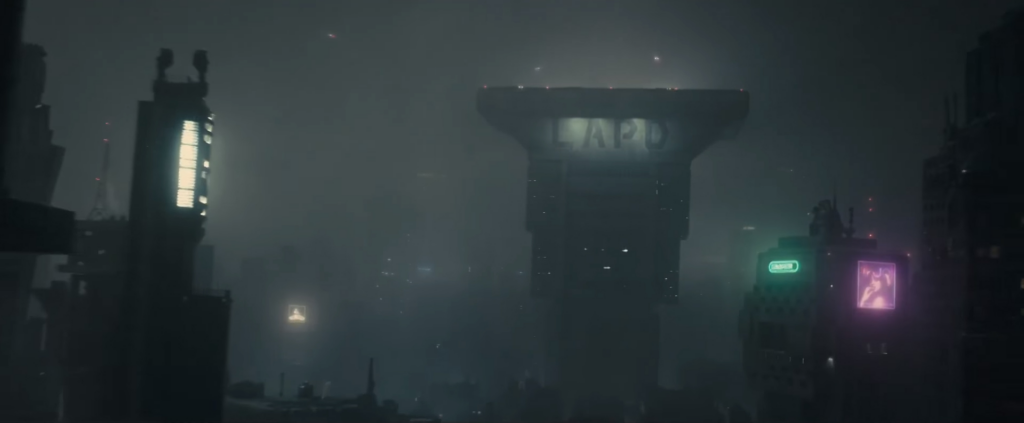
Design as Spatial Science Fiction
By viewing the skyscraper through the lens of spatial science fiction, we can explore its potential to articulate and imagine alternative urban worlds. Design in science fiction often transcends the limitations of the historical present, offering speculative visions that challenge existing paradigms. In “Blade Runner 2049,” the skyscraper’s design is both a product of and a response to the socio-political context of the film’s universe.
Imagining Alternative Urban Worlds
Science fiction, particularly in films like “Blade Runner 2049,” provides a canvas for imagining alternative urban worlds. The skyscraper, as depicted in the film, becomes a site for exploring new forms of urbanization that go beyond the constraints of the present. It challenges us to rethink the relationship between architecture, technology, and society.
By embracing a critical-speculative approach, we can use theory to envision urban spaces that prioritize equity, justice, and sustainability. This involves not only critiquing the existing conditions but also imagining and constructing new possibilities. The skyscraper, as an artifact of urbanization, thus becomes a symbol of both the challenges and the potentials of our urban future. Through the film’s depiction of ecological devastation, reliance on automated processes, and the struggle for cyborg identity, perhaps we can raise contemporary concerns about the environment and technology.

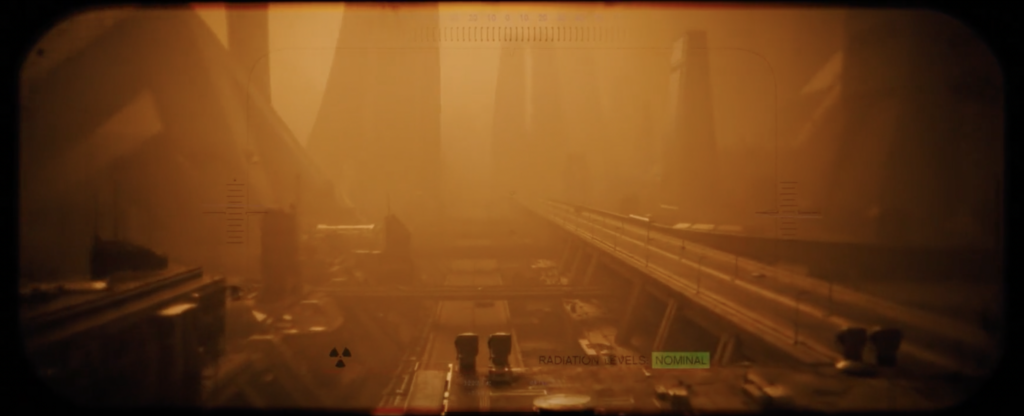
The speculative new design of the LAPD Tower, may appear biomorphic in architecture and include integrated surveillance technology, prompting us to question how urban spaces might evolve. In an exterminist future scenario, technology may pervasive through algorithms of control, but an insidious social logic prevails. It’s a system of illusions, with corporate control over cities, which is sterner and more authoritarian in flavour. The tech bubble is dominated by anxious people, who feel like they have everything to lose. Violent weather and climate destruction are of grave concern.
The command centers, known as Corporate Hacker Hives, are styled as hyper-natural hive-like forts. These urban castles have taken biomorphic design to the extreme, masking their data centers with ecological facades. The Corporate Hacker Hives are glossy showpieces for greenwashing the public eye gazing up from the street, while amplifying surveillance. These panoptic towers serve as the high ground, acting as watchtowers that surveil the city with vigilance. They project targeted advertisements on all areas of civic life based on race, gender, and economic class.
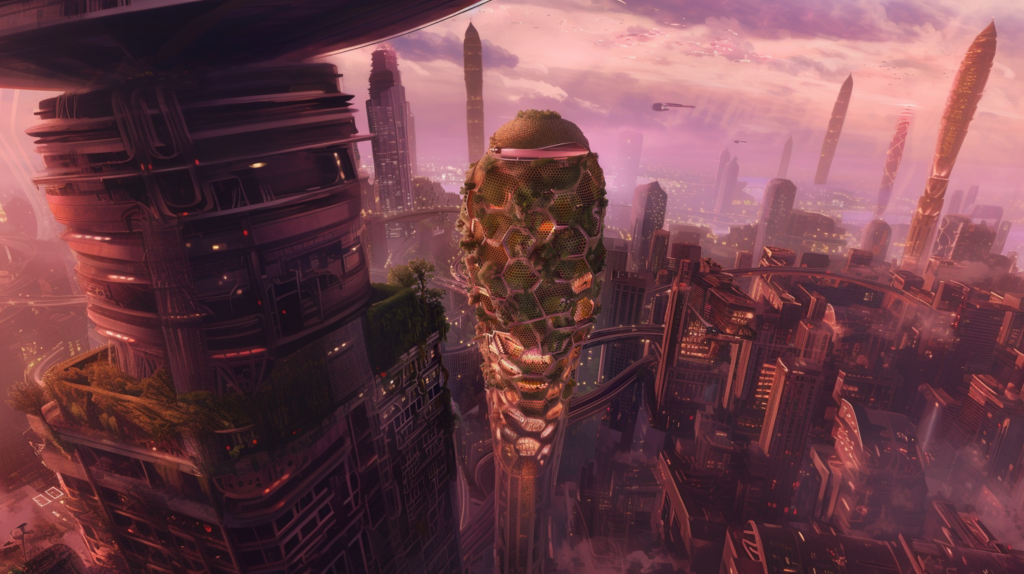
Corporate Hacker Hive Tower
The headquarters act as a data centre, housing the infrastructure of this technology, which is borrowed from the drone industry and social-media surveillance marketing. Drones and robotic sentinels are deployed from the Hives, flying to neighboring cities to cast projections of advertisements for insidious new technologies. Management systems discreetly haunt every tower, presenting an image of artifice—suspicious design fully integrated with corporate data gathering and biohacking services.
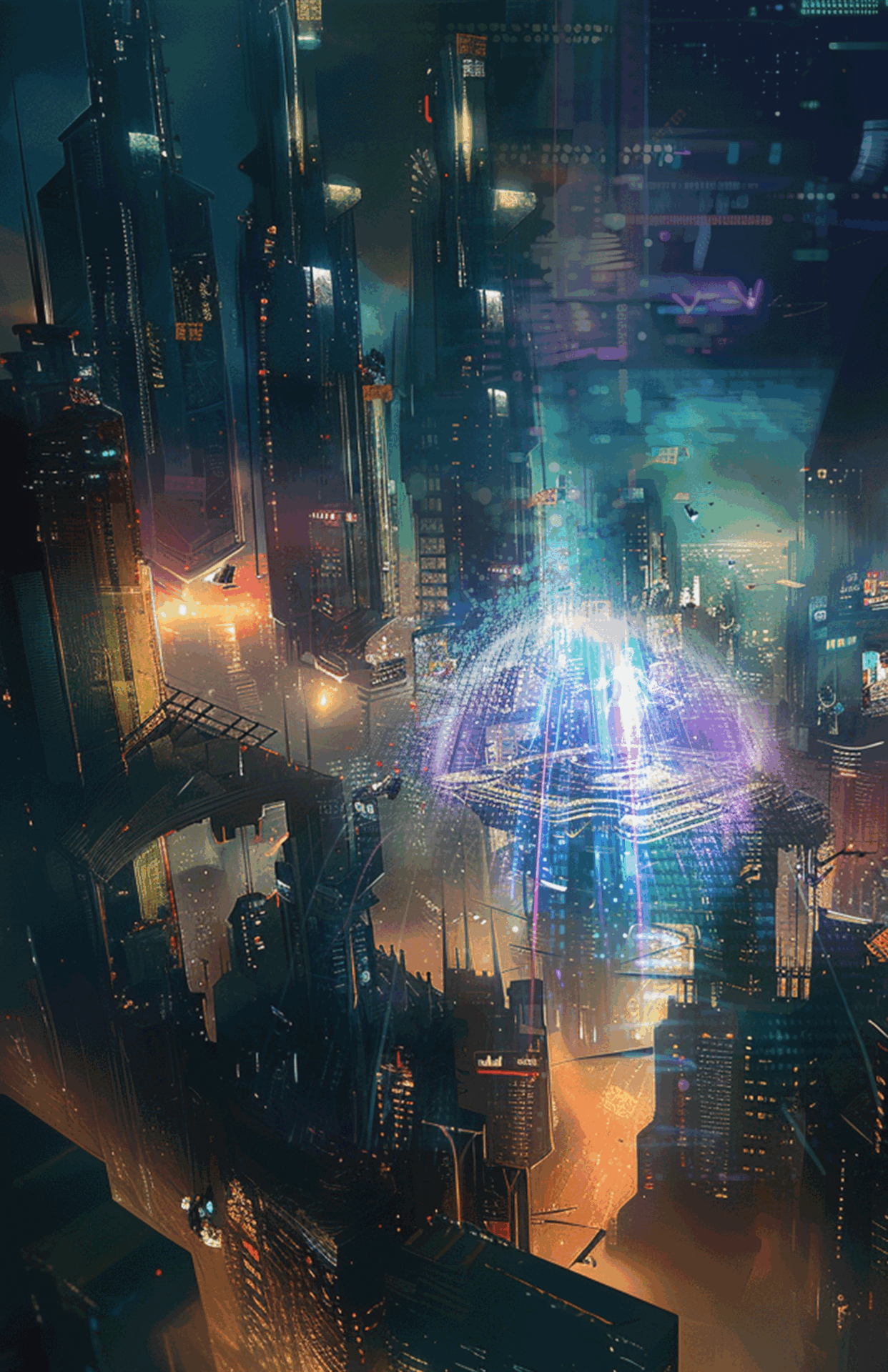
What kind of power dynamics will shape our cities? How will technology influence our interactions with urban environments? These questions are not just speculative but are grounded in the critical theory that seeks to uncover the power structures embedded in our current reality.
Conclusion
“Blade Runner 2049” serves as a powerful example of how science fiction can be used to critique and transform our understanding of reality. By means of dystopia, the film invites us to engage in a critical-speculative inquiry that challenges existing power structures. By theorizing design through the lens of spatial science fiction, we can explore the potential for architecture, urban planning and landscape architecture to shape a more equitable and sustainable futures.
Bibliography
>Frase (2016). ‘Technology and Ecology as Apocalypse and Utopia, in Four Futures: Life After Capitalism’. [Book]
>Haraway (1985). ‘A Cyborg Manifesto’. [Book]
>Sterling (2015). ‘What skyscrapers might look like in the future’. [Book]
>Villeneuve (2017). ‘Blade Runner 2049’ [Film]. Alcon Entertainment, Columbia Pictures, Torquil Studios, Blade Runner Partners.

